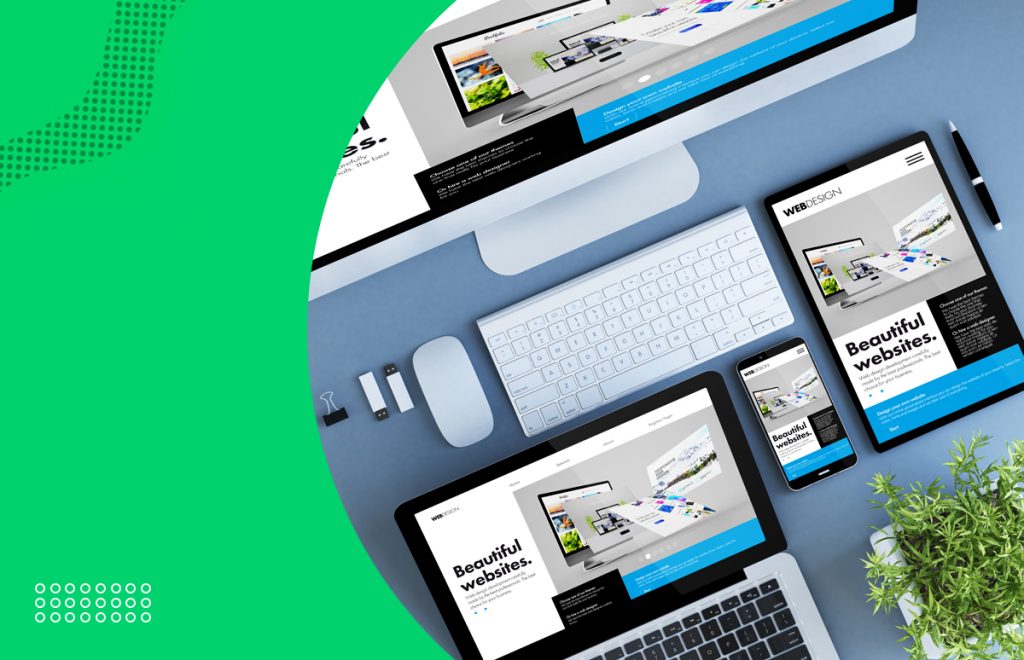The Ultimate Guide to Modern Website Design Trends
In the ever-evolving digital landscape, modern internet site layout fads play a critical duty in forming customer experience and involvement. From the increase of minimal style concepts that prioritize simpleness to the effect of bold typography in specifying brand identity, each aspect contributes to a cohesive on the internet presence.
Minimalist Design Principles
Minimal style concepts emphasize the concept that less is more, advocating for simpleness and performance in visual interaction. This technique strips away unneeded components, focusing rather on essential elements that convey the designated message properly. By prioritizing clearness, minimalist design boosts user experience, enabling visitors to navigate websites effortlessly.
Core tenets of minimalist style consist of making use of adequate white space, which develops a feeling of equilibrium and company. This adverse space not only guides the customer's interest to crucial elements yet additionally cultivates a relaxing visual ambience. Additionally, a minimal color palette is commonly utilized, making use of single schemes or soft tones to preserve aesthetic communication and prevent overwhelming the individual.
Typography plays a crucial function in minimalist style, where understandable fonts are chosen for their simplicity and performance in communicating content. Graphics and images are used sparingly, making sure that they offer an objective instead of distract from the total message. Ultimately, minimal design concepts grow a concentrated atmosphere that encourages customers to involve with the material, boosting the overall efficiency of modern internet site style. This fad shows an expanding admiration for thoughtful, user-centric aesthetic appeals in electronic rooms.
Vibrant Typography Options
Embracing bold typography selections has actually become a specifying feature of modern-day site design, as it effectively records focus and shares strong messaging. Developers are significantly using typography not merely as a functional component however as a key aesthetic component that enhances the total aesthetic and customer experience.
Additionally, the association of bold typography with minimal style principles enables striking contrasts, improving readability while keeping visual allure. The usage of whitespace around bold message further emphasizes its importance, making sure that the message resonates with the target market.
As digital landscapes come to be extra competitive, leveraging bold typography allows brand names to differentiate themselves and leave a long-term perception. The cautious choice of typefaces and their application can evoke feelings, develop tone, and drive action, making strong typography an indispensable tool in modern-day site layout. Ultimately, it is an effective means to enhance narration and make certain that key messages are not only seen however also felt.
Mobile-first and receptive Design
Mobile-first and receptive layout has actually become a vital concept in contemporary web site growth, mirroring the boosting reliance on mobile devices for accessing on the internet material. As customer actions changes in the direction of mobile surfing, developers must prioritize producing experiences that adapt effortlessly throughout numerous screen dimensions and resolutions.
A look at this now receptive style makes certain that a web site immediately adjusts its layout, pictures, and functionality based on the tool being made use of. Mobile-first style advocates for creating sites at first for smaller displays, consequently scaling up to larger displays.
Carrying out mobile-first and responsive concepts not only deals with user choices but additionally lines up with search engine optimization (SEO) methods. Significant internet search engine, like Google, prioritize mobile-friendly web sites in their rankings, making it essential for services to adopt these style methods. In a competitive electronic landscape, welcoming mobile-first and receptive design is not simply an option; it is crucial for guaranteeing accessibility and involvement with a diverse audience.
Involving Microinteractions
Microinteractions play a crucial role in improving user interaction and total internet site experience, particularly in the context of receptive description and mobile-first layout. These subtle design aspects give prompt responses to users, making communications extra satisfying and user-friendly. Examples include switch animations, notice notifies, and loading indications, which not just overview individuals however additionally develop a feeling of connection with the interface.
Integrating interesting microinteractions can dramatically improve functionality by lowering cognitive tons. When customers get aesthetic or acoustic responses upon performing activities, such as clicking a button or submitting a form, they feel much more confident in their options. This cultivates a smoother navigating experience, eventually boosting customer retention.

As site style fads continue to evolve, the importance of microinteractions can not be overstated. They offer as the subtle yet powerful touchpoints that transform common communications right into remarkable experiences, thereby raising the overall effectiveness of contemporary website design.
Lasting Internet Design Practices
Lasting web layout practices are becoming increasingly vital as the digital landscape grows and environmental issues rise. Developers and developers are identifying their duty to produce sites that not just offer customer needs yet additionally decrease ecological impact. This approach encompasses a number of essential approaches.
To start with, enhancing energy intake is vital. Sites ought to be made to pack rapidly and successfully, which decreases server power usage and improves user experience. Strategies such as photo compression, decreasing HTTP demands, and utilizing modern-day coding practices contribute substantially to this goal.
Second of all, selecting green holding carriers is critical - website design. Numerous hosting companies are now powered by renewable resource sources, making it possible for web sites to run in an extra lasting way. This option shows a commitment to minimizing carbon impacts
In addition, taking on a minimal design can enhance sustainability. Less elements on a page cause much less information transfer, which not just accelerates packing times yet additionally conserves sources.
Finally, advertising electronic access makes sure that websites reach a wider audience without unneeded bloat, lining up individual experience with ecological responsibility. By integrating these sustainable practices, internet developers can add favorably to both individual involvement and the planet's wellness.
Verdict
In recap, contemporary web site style trends emphasize the combination of minimalist principles, vibrant typography, and responsive layout to improve customer experience. Taking on these fads is essential for developing impactful digital experiences that resonate with individuals in an increasingly affordable on the internet landscape.
In the ever-evolving digital landscape, modern-day web site design fads play an essential duty in shaping user experience and engagement. By focusing on clearness, minimal layout enhances customer experience, allowing visitors to browse web sites easily.
Ultimately, minimal style Our site concepts cultivate a concentrated atmosphere that urges individuals to involve with the web content, improving the overall efficiency of modern-day web site layout.Microinteractions play a critical function in improving customer engagement and overall website experience, specifically in the context of mobile-first and responsive style.In recap, modern internet site design patterns emphasize the combination of minimal concepts, bold typography, and receptive layout to enhance customer experience.
 Michael Oliver Then & Now!
Michael Oliver Then & Now! Monica Lewinsky Then & Now!
Monica Lewinsky Then & Now! Andrew McCarthy Then & Now!
Andrew McCarthy Then & Now! Teri Hatcher Then & Now!
Teri Hatcher Then & Now! Rossy de Palma Then & Now!
Rossy de Palma Then & Now!